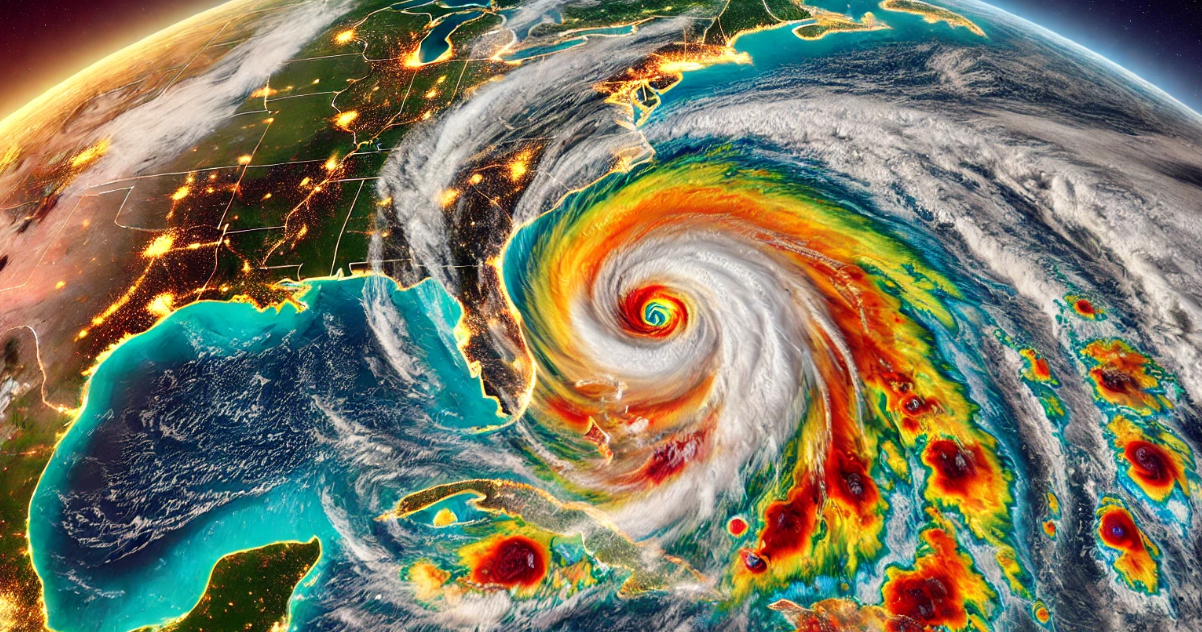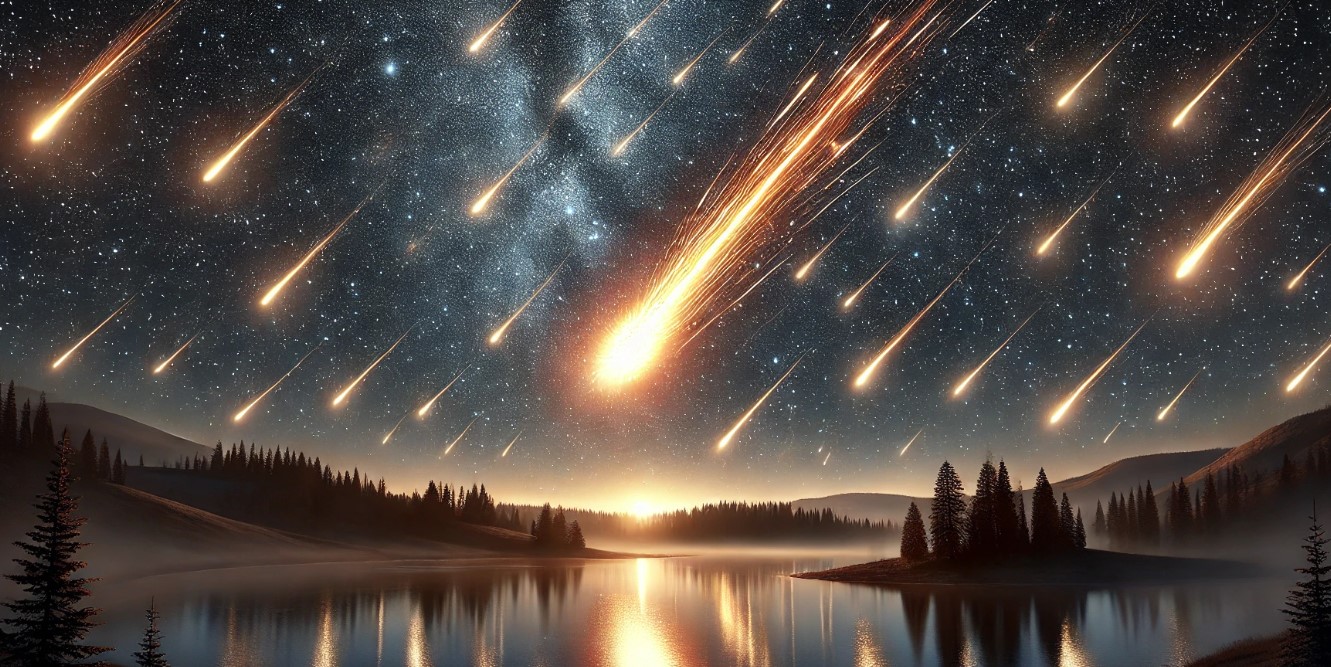Milton’s journey began in the Bay of Campeche, where it unexpectedly developed into a formidable hurricane. One of the most striking aspects of Milton’s evolution was its eastward path through the Gulf, a rarity in hurricane history. The last comparable storm occurred in 1848, highlighting the unusual nature of Milton’s trajectory. This path, coupled with its rapid intensification, has made it a focal point for climate scientists and meteorologists.
- Hurricane Milton developed unexpectedly in the Bay of Campeche, following a rare eastward path through the Gulf, a trajectory not seen since 1848.
- Milton’s rapid intensification was fueled by warm sea surface temperatures and low wind shear, allowing the storm to draw energy efficiently, particularly given its small size and pinhole eye.
- Climate change is a significant factor in Milton’s development, with experts citing warmer ocean temperatures and El Niño as contributing to the storm’s strength and behavior.
- The storm has raised concerns about the preparedness of Florida’s west coast, a region not hit by major hurricanes in over a century, highlighting the need for improved forecasting and adaptation in the face of increasingly severe weather.
Reports from various sources indicate that several factors contributed to Milton’s rapid escalation. Warm sea surface temperatures, particularly those extending into deeper waters, provided a crucial energy source for the storm. Additionally, low wind shear allowed Milton to maintain its structure and intensify rapidly. These conditions, combined with the storm’s small size and pinhole eye, enabled it to draw energy more efficiently, much like an ice skater spinning faster with arms pulled in.
Climate change is an underlying theme in the discussion of Milton’s behavior. Experts, including Princeton University climate scientist Gabriel Vecchi, suggest that warmer ocean temperatures, partly due to global warming, have played a significant role in the storm’s development. The unusually warm waters in the Gulf of Mexico created an energy-rich environment for Milton, while natural factors like last year’s El Niño also contributed to the conditions.
Recent reports suggest that a cooling event occurred in parts of the Atlantic Ocean, particularly around the equator, during the summer of 2024. This rapid drop in sea surface temperatures, which followed a period of record warmth earlier in the year, has puzzled scientists. While the exact cause remains unclear, it appears to be a natural climate variation rather than a result of climate change. Researchers are monitoring this event closely to understand its potential effects on weather patterns in surrounding regions
The implications of such powerful storms are profound, especially for regions like Florida’s west coast, which have not experienced direct hits from major hurricanes in over a century. The potential for catastrophic storm surges and heavy rainfall has prompted widespread evacuations and heightened awareness of the need for preparedness.
As researchers continue to study the complex interactions between climate change and hurricane behavior, the need for improved forecasting and adaptation strategies becomes evident. Milton’s journey serves as a reminder of the challenges posed by extreme weather events in a warming world and the importance of understanding and mitigating their impact.
How Hurricanes Form and Move: A Guide to Nature’s Most Powerful Storms
Hurricanes are among the most destructive forces in nature, capable of wreaking havoc on coastal communities with high winds, storm surges, and torrential rain. These powerful storms, also known as tropical cyclones in certain regions, form over warm ocean waters and move across vast distances, often following complex paths shaped by various atmospheric and oceanic factors. Understanding how hurricanes form and move is key to predicting their behavior and preparing for their impacts.
How Hurricanes Form
Hurricanes form in tropical regions where the ocean’s surface temperature exceeds 80°F (27°C), providing the heat and moisture needed to fuel their development. The process begins with a cluster of thunderstorms that organize into a low-pressure area, called a tropical disturbance. For this disturbance to intensify into a hurricane, several key conditions must be met:
- Warm Ocean Waters: The heat from warm ocean water is the primary energy source for a hurricane. As water evaporates from the sea’s surface, it rises into the atmosphere and cools, forming clouds. The condensation of water vapor releases latent heat, which powers the storm.
- Low Wind Shear: Wind shear refers to the change in wind speed or direction with altitude. Low wind shear is essential for a hurricane to form and strengthen because it allows the storm to maintain its vertical structure. High wind shear can disrupt the storm’s organization, preventing it from growing.
- A Pre-existing Weather Disturbance: Hurricanes typically develop from pre-existing tropical disturbances such as tropical waves or troughs. These disturbances help initiate the rotation needed for a storm to intensify.
- Coriolis Effect: The Coriolis effect, caused by the Earth’s rotation, gives hurricanes their characteristic spin. In the Northern Hemisphere, this spin is counterclockwise, while in the Southern Hemisphere, hurricanes (known as cyclones) spin clockwise. This effect also prevents hurricanes from forming near the equator, where there is minimal Coriolis force.
As the storm develops, it can progress through several stages: tropical depression, tropical storm, and eventually a hurricane when sustained winds reach 74 mph (119 km/h). The storm’s core, known as the eye, is usually calm, while the surrounding eye wall contains the most intense winds and rain.
How Hurricanes Move
Once formed, hurricanes are driven by larger-scale weather patterns and can cover vast distances, often taking unpredictable paths. Several factors influence the movement of hurricanes:
- Trade Winds: In the tropics, hurricanes are initially steered by the trade winds, which blow from east to west. This causes most tropical storms to move westward, often heading toward the Caribbean, Central America, or the Gulf of Mexico.
- High-Pressure Systems: Large-scale high-pressure systems, such as the Bermuda High in the Atlantic, act as steering mechanisms for hurricanes. Depending on the position and strength of these high-pressure systems, hurricanes may be pushed westward or deflected northward.
- Jet Stream and Troughs: As hurricanes move into higher latitudes, they may encounter the jet stream or an upper-level trough (a region of low pressure). These weather features can pull the hurricane northward or northeastward, often causing the storm to “recurve” away from land and back into the ocean. However, in some cases, the interaction with a trough can intensify a hurricane, bringing it closer to the coastline.
- Coriolis Effect: As a hurricane moves away from the equator, the Coriolis effect becomes stronger, causing the storm to gradually veer toward the poles. This is why hurricanes that form in the Atlantic often curve northward toward the United States and Canada, rather than continuing westward indefinitely.
- Speed and Strength: Hurricanes can vary widely in speed. Some storms move slowly, stalling over an area and dumping enormous amounts of rain, while others can accelerate, racing toward land with devastating winds. A storm’s strength can also influence its path; stronger hurricanes are often more resistant to the influence of weaker steering winds.
Why Hurricanes Are Difficult to Predict
While scientists have made great strides in predicting the paths of hurricanes, accurately forecasting a hurricane’s exact movement remains a challenge due to the complex interplay of atmospheric conditions. A slight shift in a high-pressure system or a change in wind shear can significantly alter a storm’s trajectory.
In recent years, advances in satellite technology, computer modeling, and weather data have improved the accuracy of hurricane tracking, helping authorities issue timely warnings. However, the unpredictable nature of hurricanes, especially in cases of rapid intensification or changes in direction, means that constant monitoring is essential to prepare for potential landfall.
Impacts of Hurricanes
Hurricanes can bring a range of severe impacts, including:
- Storm Surge: One of the most dangerous effects of hurricanes, storm surges occur when strong winds push ocean water onto the shore, flooding coastal areas.
- High Winds: Winds can reach speeds exceeding 150 mph (240 km/h) in powerful hurricanes, causing widespread damage to buildings, infrastructure, and power lines.
- Torrential Rain and Flooding: Even after the winds subside, heavy rain from hurricanes can cause rivers to overflow and lead to catastrophic inland flooding.
- Tornadoes: Hurricanes can spawn tornadoes, particularly in the outer rain bands, adding another layer of danger to the storm’s destructive force.
Arguments Against Climate Change or Global Warming: An Overview
The topic of climate change or global warming has been a focal point of global debate for decades. While the vast majority of scientists agree that human activities are contributing to climate change, there remains a segment of the population, including some politicians, business leaders, and scientists, who argue against the prevailing consensus. These arguments typically fall into several categories, including doubts about the science, skepticism about the severity of the impacts, and concerns about the economic consequences of climate policies.
Here’s a closer look at the main arguments put forward by climate change skeptics:
1. Natural Climate Variability
One of the central arguments against human-caused climate change is that the Earth’s climate has always undergone natural cycles of warming and cooling, independent of human activity. Skeptics argue that the current warming trend may simply be part of a natural cycle. They point to past periods such as the Medieval Warm Period (950-1250 AD), during which global temperatures were comparable to or warmer than today, despite the absence of industrial emissions.
Critics of the anthropogenic global warming theory argue that fluctuations in solar activity, volcanic eruptions, ocean currents, and other natural factors are likely responsible for much of the observed climate change. They suggest that attributing recent warming trends solely to human activities, such as burning fossil fuels, oversimplifies the complex interactions that naturally drive climate patterns.
2. Questioning Climate Models
Another argument raised by climate change skeptics revolves around the reliability of climate models, which are used to predict future warming scenarios. They argue that these models, while sophisticated, rely on assumptions and estimates that may not be entirely accurate or reflective of the real world. Skeptics claim that many climate models have historically overestimated the rate of warming, leading to exaggerated predictions of future climate impacts.
For example, some point to discrepancies between model predictions and observed temperature records, particularly when certain models have failed to account for natural cooling events or the so-called “pause” in global warming during the early 2000s. Skeptics argue that these inaccuracies suggest a lack of precision in the models, raising doubts about the urgency or severity of projected climate impacts.
3. Economic Consequences and Policy Criticism
A significant portion of the opposition to climate change policies stems from concerns about the economic consequences of aggressive action to reduce greenhouse gas emissions. Skeptics argue that the costs of implementing stringent regulations, such as carbon taxes, renewable energy mandates, and restrictions on fossil fuel usage, could have detrimental effects on the economy, particularly in industries reliant on cheap, abundant energy.
Critics contend that transitioning away from fossil fuels could lead to job losses in sectors like coal mining, oil drilling, and natural gas production, particularly in regions where these industries are major economic drivers. They also express concern that higher energy costs resulting from climate policies could disproportionately affect low-income households, making basic necessities like electricity and heating less affordable.
Moreover, some argue that the benefits of climate action may not justify the costs, particularly if global efforts are uneven. They suggest that even if developed nations significantly reduce their emissions, the growing industrial output from developing countries, like China and India, will negate any progress, making global climate agreements like the Paris Accord economically burdensome without yielding meaningful environmental benefits.
4. Disputed Temperature Records and Data Adjustments
Climate change skeptics also raise concerns about the accuracy and transparency of global temperature records. They argue that the methods used to collect and analyze temperature data can be flawed or manipulated. For example, they claim that temperature stations in urban areas, where heat tends to be concentrated due to human activity (the “urban heat island effect”), can skew global temperature averages upward.
Additionally, skeptics have pointed to cases where historical temperature data has been adjusted by climate scientists, arguing that these adjustments often result in a trend toward greater warming. They question whether these changes are justified and raise suspicions that they may be influenced by a desire to reinforce the narrative of human-caused global warming.
5. Debating the Severity of Climate Impacts
While many accept that the planet is warming, some skeptics argue that the impacts of climate change have been overstated. They claim that there is insufficient evidence to suggest that climate change will lead to catastrophic outcomes, such as widespread sea-level rise, extreme weather events, or mass species extinction.
Skeptics argue that many climate projections, particularly those that predict dramatic changes by the end of the century, rely on worst-case scenarios that may not reflect reality. They also highlight instances where predicted environmental disasters, such as ice-free Arctic summers or rapidly accelerating sea-level rise, have not yet materialized as forecasted. Some point to examples where human ingenuity and technological advancement have mitigated environmental challenges in the past, suggesting that adaptation, rather than drastic emission reductions, may be the best course of action.
6. Political and Ideological Concerns
Some arguments against climate change stem from political and ideological opposition to what skeptics perceive as overreach by governments and international organizations. They view climate change policies as part of a broader agenda to expand government control over industries and individual freedoms, particularly in the areas of energy production and consumption.
Skeptics also express concern about the influence of global organizations, such as the United Nations, in setting climate policies that could infringe on national sovereignty. For example, some argue that international climate agreements, like the Paris Accord, disproportionately burden developed nations while allowing developing countries to continue increasing their emissions. This, they say, undermines economic competitiveness and places undue pressure on certain industries without delivering equitable climate solutions.





